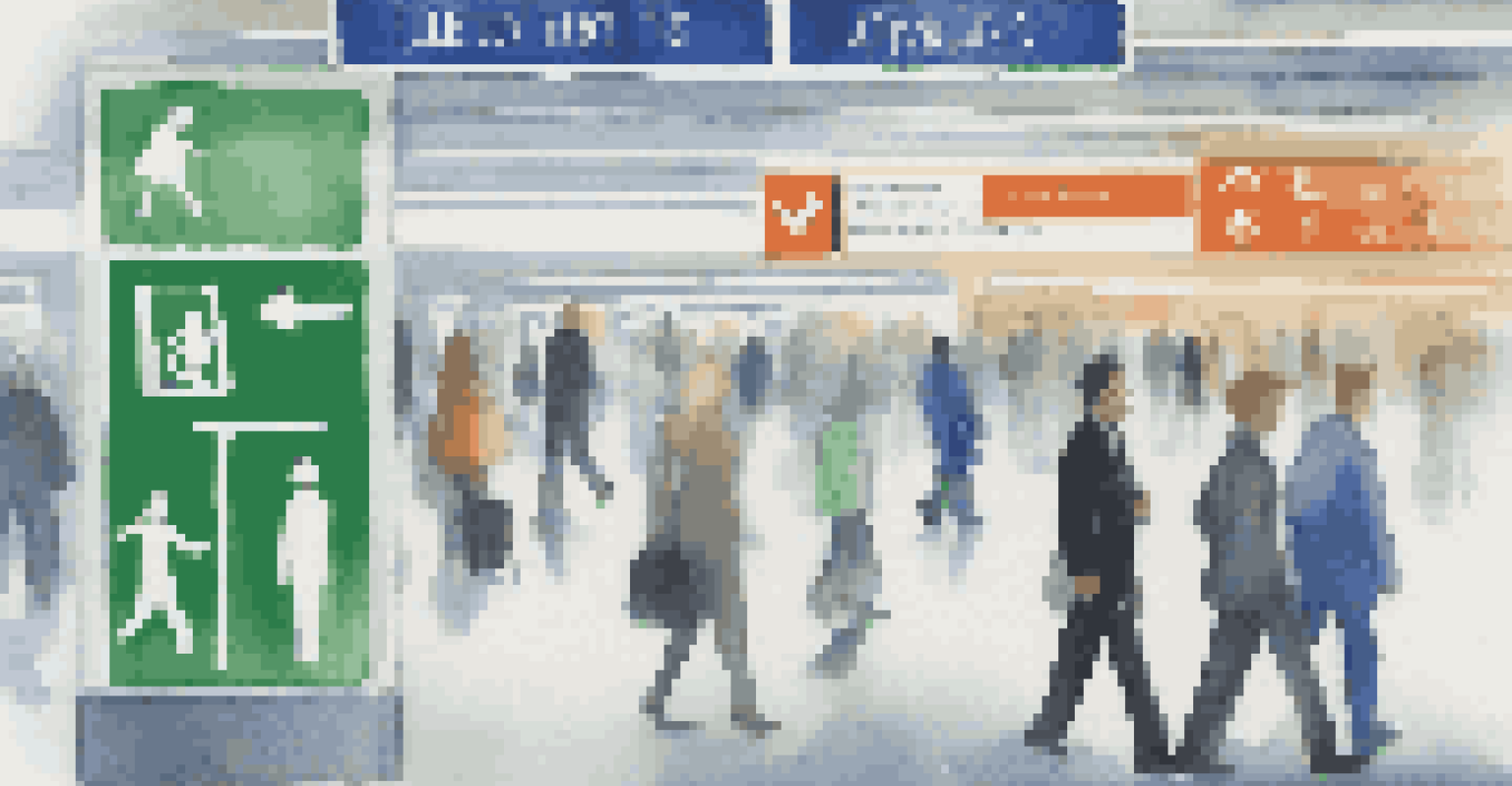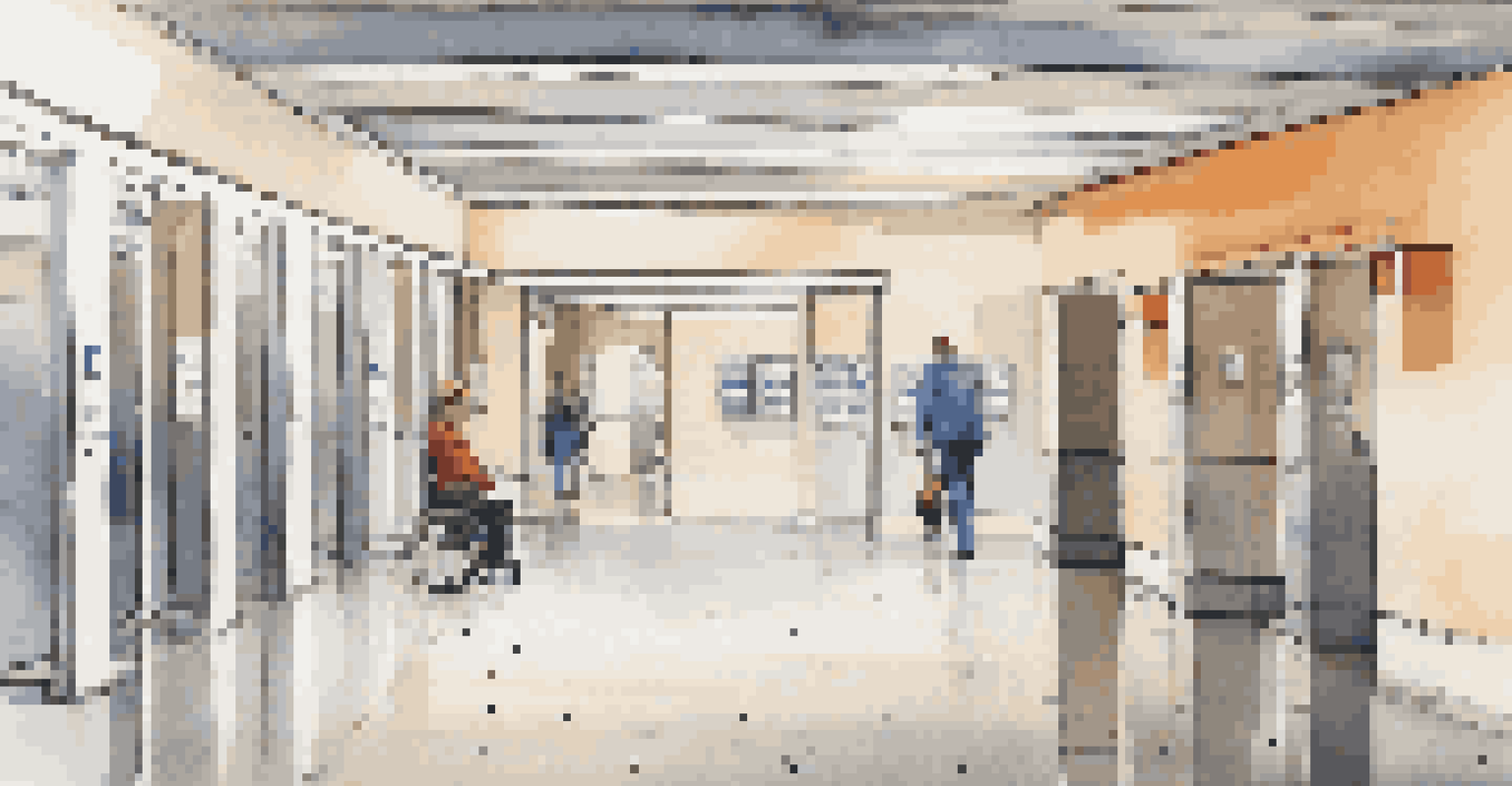Understanding Airport Signs: A Traveler's Guide

The Importance of Airport Signs for Travelers
Airport signs are crucial for ensuring travelers can navigate efficiently through busy terminals. They guide you to essential areas such as check-in counters, security, and boarding gates. Understanding these signs can significantly reduce stress, making your travel experience smoother and more enjoyable.
Traveling – it leaves you speechless, then turns you into a storyteller.
For instance, imagine arriving at a bustling airport for the first time. Without clear signage, the overwhelming atmosphere can quickly lead to confusion and anxiety. Well-placed signs not only provide directions but also offer reassurance, allowing you to focus on your journey rather than getting lost.
Moreover, airport signage is designed to accommodate a diverse range of travelers, including those who may not speak the local language. Symbols and icons are universally understood, helping everyone feel more at ease as they navigate the airport landscape.
Common Types of Airport Signs You’ll Encounter
You’ll come across various types of airport signs, each serving a specific purpose. Wayfinding signs help direct you to key locations, while informational signs provide details about services and amenities. Additionally, safety signs are crucial for ensuring your well-being during your travels.

For example, wayfinding signs often use arrows and color codes to indicate directions to gates, restrooms, and baggage claim. These visual cues are designed to be intuitive, helping you move through the airport without much thought. Meanwhile, informational signs may include details about flight status and airport services.
Airport Signs Reduce Travel Stress
Clear and effective airport signage helps travelers navigate busy terminals, reducing confusion and anxiety.
Safety signs, on the other hand, are vital during emergencies. They guide you to exits and provide instructions on how to stay safe, underscoring the importance of being aware of your surroundings while traveling.
Decoding Airport Signage Symbols and Colors
Understanding the symbols and colors used in airport signage can enhance your travel experience. Different colors often represent specific functions; for instance, blue is frequently used for informational signs while green indicates direction. Recognizing these color codes can help you quickly interpret the information presented.
The journey of a thousand miles begins with one step.
Symbols, such as icons for restrooms or food services, are designed to be easily recognizable. This universality is particularly helpful for international travelers, as these icons transcend language barriers. For example, the image of a fork and knife universally indicates dining options.
Familiarizing yourself with these symbols and colors before your trip can make navigating the airport feel much less daunting. By knowing what to look for, you can avoid unnecessary confusion and focus on enjoying your travel experience.
Navigating Security Checks with Confidence
Security checks can be one of the most stressful parts of flying, but understanding the signs can ease that anxiety. Look for signs that indicate which items are allowed or prohibited, as this can save you time and hassle. Knowing what to expect at security helps you prepare in advance.
For example, signs confirming that laptops and liquids must be removed from bags can help you streamline your preparation. If you're aware of these requirements, you'll spend less time fumbling with your belongings while in line. Additionally, signs indicating the fastest lanes for families or travelers with disabilities can help you choose the right queue.
Universal Symbols Aid Navigation
Airport signs utilize recognizable symbols and color codes, making it easier for all travelers, regardless of language, to find their way.
Ultimately, being informed about security signage not only facilitates a smoother process but also ensures you can focus on your travel plans rather than the logistics of getting through security.
Finding Your Boarding Gate and Flight Information
Once you're through security, locating your boarding gate is essential. Airport signs provide crucial information about gate numbers, boarding times, and any changes to your flight. Being familiar with this signage can help you find your way quickly and efficiently.
For instance, large digital displays often list flight statuses and gate changes in real time. If you’re in a hurry, these signs can guide you to your gate while keeping you updated on any delays. It’s a good idea to check these displays regularly, as information can change rapidly.
Moreover, directional signs can lead you to your gate while also pointing out nearby amenities, such as restaurants or shops. This way, you can grab a bite or do some last-minute shopping without straying too far from your boarding area.
Accessibility Features in Airport Signage
Airports are increasingly prioritizing accessibility in their signage to ensure all travelers can navigate comfortably. Signs are often designed with features such as braille and high-contrast colors to assist those with visual impairments. Understanding these features can empower you or your loved ones while traveling.
For example, tactile maps or audio assistance help travelers who may not be able to see traditional signs. These resources ensure that everyone, regardless of ability, can find their way through the airport without difficulty. Additionally, symbols indicating accessible restrooms or elevators are prominently displayed.
Accessibility Enhances Travel Experience
Inclusive signage features like braille and high-contrast colors ensure that all travelers, including those with disabilities, can navigate airports comfortably.
This commitment to accessibility not only enhances the travel experience for people with disabilities but also fosters an inclusive environment for all travelers. Awareness of these features can make a significant difference in one’s journey through the airport.
Tips for Using Airport Signs Effectively
To make the most of airport signage, consider a few helpful tips. First, always look up when entering an airport; most signs are placed at eye level or higher to catch your attention. Taking a moment to scan your surroundings can help you orient yourself and identify key areas.
Secondly, don’t hesitate to ask airport staff for directions if you’re unsure. They are trained to assist travelers and can provide guidance beyond what the signs communicate. Sometimes, a quick question can save you time and frustration.

Lastly, familiarize yourself with the layout of the airport before your trip. Many airports offer maps on their websites or apps, allowing you to plan your route in advance. This preparation can make navigating the airport feel much less overwhelming.